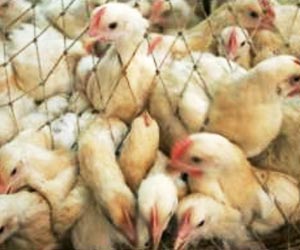Bird flu tracking has helped scientists to draw a little closer in understanding the evolution of the viruses as well as the genes that cause them to be more infectious to people.
Bird flu tracking has helped scientists to draw a little closer in understanding the evolution of the viruses as well as the genes that cause them to be more infectious to people.
According to researchers in Taiwan, about 52 key genetic changes distinguish avian influenza strains from the common human influenza. This conclusion follows the analysis of the genes of more than 400 A- type flu viruses. This analysis will also aid scientists trace the mechanism for infection and understand the replication of viruses in different species, according to a report appearing in the September edition of Emerging Infectious Diseases.The interest in influenza viruses was sparked by the spread of the H5N1 avian flu strain that has already infected at least 241 people to date killing 141 of them. Its mutation into a pandemic form can cause it to be passed easily from human to human killing many.
Guang-Wu Chen and colleagues at Taiwan's Chang Gung University wrote, ‘How many mutations would make an avian virus capable of infecting humans efficiently, or how many mutations would render an influenza virus a pandemic strain, is difficult to predict.’
The researchers analyzed the gene sequences of 306 human and 95 avian influenza viruses to molecularly identify the host species. The data was crosschecked with 15,785 more sequences from the National Center for Biotechnology Information.
Ron Fouchier, a virologist at the Erasmus University in Rotterdam said, ``It is the type of work that everyone has thought of doing, but no one has had the time to do. The number of mutations in the viruses that correlate with host species is much larger than I initially suspected.''
Fouchier said that there are dozens of influenza subtypes, many of which were not analyzed in the study. This could probably have influenced findings.
Advertisement
The pandemic of 1918 that killed almost 50 million people is believed to have begun when an avian flu virus jumped to people from birds. The study conducted by the Taiwan scientists appear to indicate that the H1N1 virus that caused the 1918 pandemic, known as Spanish flu, is more closely related to avian influenza than other human influenza viruses.
Advertisement


